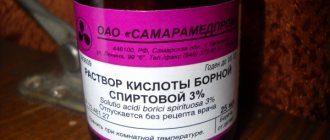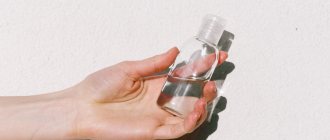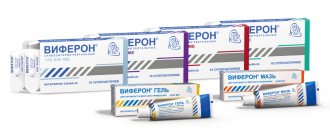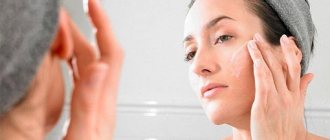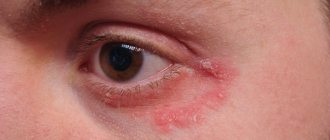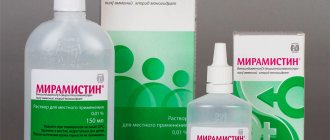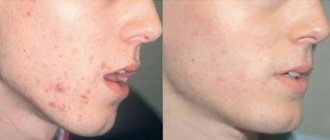Chlorhexidine belongs to the group of broad-spectrum antiseptic and bactericidal drugs for external and local use. It is based on the substance bigluconate, as well as purified water or alcohol. The solution is available on the market in different concentrations. In this article we look in more detail at what chlorhexidine solution is and where it is used.
Where is Chlorhexidine used?
The pharmaceutical product is used for the treatment and prevention of diseases caused by microorganisms sensitive to Chlorhexidine.
Depending on the concentration of the substance, the medicine can be used in the treatment of various pathologies.
After operations, in order to prevent infectious pathologies, doctors resort to using a pharmaceutical solution.
Chlorhexidine is often used for dental purposes for the treatment of dentures. In some cases, medication is used to treat periodontitis, stomatitis, and they are used to rinse the gums.
The medicine is used in:
- Urology
- Gynecology
- Surgery
Masks
Face masks that help treat acne are different from regular skin-moisturizing masks. To eliminate acne, the best masks are those that absorb excess oils, draw out impurities from the skin's pores and restore balance. After using the mask, the skin looks fresher.
Antibacterial ingredients are also added to the masks, such as charcoal, green tea or a few drops of chlorhexidine. When using masks, the size of comedones is reduced, and the removal of excess fat and impurities prevents the appearance of acne in the future.
Masks can be used 1-2 times a week for 15-30 minutes.
- Mix a mixture of bodyaga powder and cosmetic white clay with a 0.05% chlorhexidine solution. Ratio of mask components: 2 volumes of clay powder, one volume of bodyaga powder.
- Apply the product for 15 minutes. Then rinse with warm water.
- After using the mask, it is recommended to use sunscreen creams.
Contraindications
Chlorhexidine is contraindicated:
- In case of hypersensitivity to the components of the drug
- People suffering from dermatitis
- Do not use together with other antiseptics, for example, with hydrogen peroxide
- For ophthalmic use, rinsing the eyes with this product is prohibited.
- For disinfection of the surgical field
- After intervention on the auditory canal and central nervous system
It is important to know that the pharmaceutical product should be used with caution when treating children.
With cosmetic clay
To treat acne, a peeling agent based on chlorhexidine and blue or black cosmetic clay is used. Cosmetic clay has beneficial properties, it contains minerals and can cleanse the skin.
When choosing the type of cosmetic clay, you need to consider your skin type. The frequency of the procedure also depends on the skin type: for oily and combination skin, it is recommended to do the mask 2-3 times a week, for dry skin - no more than once a week.
- Dilute the clay powder with water to the consistency of a thick paste.
- Mix the mixture with chlorhexidine in a 1:1 ratio.
- Apply the product to your face and massage for several minutes.
- Rinse off the composition with warm water.
Brief instructions for use
To prevent sexually transmitted diseases, after unprotected sexual intercourse, after a maximum of 2 hours, 2-3 ml of a 0.5% solution should be administered into the urinary canal of a man, 1 ml into the canal for women and 5-10 ml into the vagina. You can treat skin areas near the genitals with the product. After administering the drug, try to postpone urination for 2 hours.
Your doctor should tell you about douching for gynecological diseases.
For sore throat, rinse the mouth with 0.5% or 0.2% Chlorohexidine solution.
For inflammatory pathologies of the urinary tract, it is necessary to inject 2-3 ml of 0.05% of the product into the urinary canal.
Before using the drug, you should consult your doctor.
Chemical properties
To better understand what chlorhexidine is, you need to know its chemical properties. It appears to be a white crystalline powder and has a melting point of 137 °C. To make the drug, the powder is diluted in a certain proportion with water or alcohol. The resulting solution is colorless or light yellow.
It has a weak, unexpressed odor or is characterized by its complete absence. The chemical formula is C22H30CL2N10. It is stable, which makes it possible to achieve a normal bactericidal effect when applied to the skin, when rinsing, etc. When mixed with alcohol, the bactericidal and antiviral characteristics of the substance are enhanced.
Where to put candles
Depending on the type of disease, the method of administering Chlorhexidine suppositories can be different: rectal or vaginal.
But it is important to understand that the use of suppositories is only permissible as prescribed by a doctor.
Before using the suppository, you need to wash and dry your hands well, then you need to remove it from the package and insert it into the vagina in a lying position.
To avoid leakage of the drug, do not rush to get out of bed.
Chlorhexidine suppositories help well with thrush and cystitis.
Yes or no to use instead of tonic
It is worth noting that the main property of an antiseptic, with constant use, turns into a main drawback.
After all, medicinal substances also act on healthy flora, which in turn contribute to the healthy functioning and protection of the skin. The consequence of prolonged use of chlorhexidine will be disruption of the sebaceous glands - this will make the skin excessively dry. Is it possible to wipe your face with chlorhexidine every day? Cosmetologists unanimously prohibit such actions, since constant use of the drug kills not only pathogenic flora, but also positive ones. In addition, frequent use will dry out the skin.
Why is Chlorhexidine better than peroxide?
- Hydrogen peroxide and Chlorhexidine are antiseptics. Medicines differ in their spectrum of effects and medicinal properties.
- Hydrogen peroxide, unlike Chlorhexidine, is available in only one dosage form, which is not very convenient.
Chlorkesidine suppositories are used for the treatment of gynecological and urological pathologies.
Both products disinfect wounds and abrasions well.
Chlorhexidine has a wider range of therapeutic effects; it is used to treat the hands of the surgeon and nurse before surgery, and it is also used in gynecology.
Care after acid peeling
Cleaning with exfoliants is the main cosmetology trend in recent years. This is the most gentle procedure using high concentration fruit acids. They dissolve dead cells of the stratum corneum and cleanse the pores from the inside - they treat even complex forms of acne and tighten the texture of the face. In addition, dry cleaning helps cope with photoaging: it stimulates the production of collagen and elastin, smoothes wrinkles, and removes pigmentation.
Despite the absence of physical damage, specific facial care after cleansing and peeling is still required. AHA and BHA acids increase sensitivity to ultraviolet radiation—be sure to apply sunscreen with 30 SPF or more before going outside.
Compresses based on the drug
An effective remedy against pimples and acne is solution-based lotions. To make a compress, you must adhere to the following sequence:
- facial skin is pre-cleaned with lotions that do not contain alcohol;
- a cotton swab is soaked in antiseptic;
- a disc is applied to the problem area of the skin affected by purulent growths and secured with a band-aid for 10 minutes;
- after 10 minutes, the cotton pad must be removed and the face washed under cold running water;
- Although the drug does not dry out the skin, as doctors say, it is still recommended to moisturize the skin with a nourishing cream after the lotion to avoid peeling.
It is very important to wash your face with cold water after using lotions, as the solution becomes more active when the temperature rises.
Is it possible to drink antiseptic?
No you can not. Unfortunately, some people use antiseptics internally due to the presence of alcohol in the composition. The result of such use is burnt internal organs, severe poisoning, and this is at best; at worst, the person dies. For the production of antiseptics, two types of alcohol are used - ethanol and isopropyl. The second is cheaper, is not suitable for the production of alcohol-containing drinks due to toxicity and is not suitable for drinking, but due to its low price it is most often used in the manufacture of sanitizers.
Chatterbox
To treat acne and inflammatory skin processes, talkers are used, which may contain:
- medical, ammonia or camphor alcohol, which has drying and disinfecting properties;
- boric acid, which acts as an antiseptic and cleanses the skin surface well;
- salicylic acid, which helps heal damaged skin and reduce its fat content;
- zinc oxide – dries the skin and reduces the intensity of inflammatory processes;
- antibiotics that work well against bacteria and viruses;
- sulfur, which is an effective antifungal agent;
- activated carbon is an absorbent that absorbs dirt well and cleanses the skin;
- herbal tinctures that help relieve inflammation and soothe the skin.
Advice! The composition of the drugs for chatter and their dosage is determined by the doctor.
User reviews
Marina Polishchuk
I bought this as a mouth rinse a year ago. I forgot the bottle in the medicine cabinet)) And then I got the flu, and unpleasant pimples appeared on my chin. I rushed to the first aid kit, and there it was!)) I applied cotton wool with chlorhexidine to the pimples for three days, morning and evening. In three days they dried up, and the redness around also went away. Just don’t lubricate your whole face with it, it’s very tight on the skin ! It's a good product for drying out acne.
Pashchenko
Recommended by a friend. Now I always use Chlorhexidine during PMS . The rashes still plague me, even though I’m already 21. The drug works and saves me and my face.
Chlorhexidine is used as a broad-spectrum disinfectant in hospitals, hospitals, and home medicine cabinets. Proven antimicrobial effectiveness and low cost are the basis for the long-term popularity of the drug .
Salicylic acid
The active ingredient of salicylic acid is the active component of willow bark. Many years ago, the drug was used in the treatment of rheumatism and some types of diathesis. Today, salicylic acid is the basis for the production of some medications.
The drug has a mild antiseptic and anti-inflammatory effect and is used to treat some skin diseases. It is used externally and is available in the form of an ointment and an alcohol solution.
